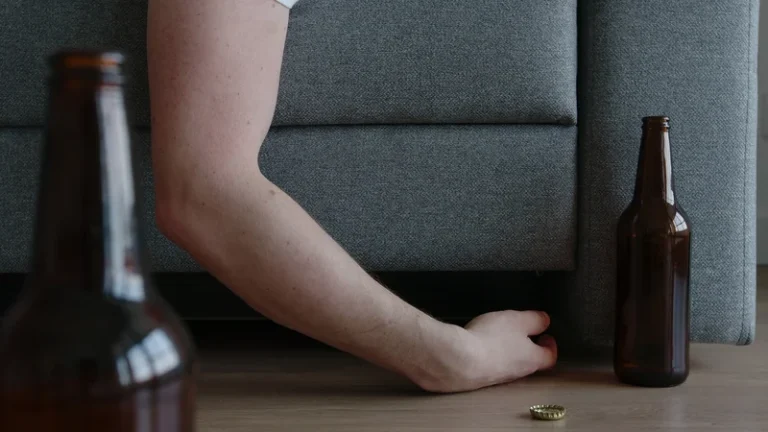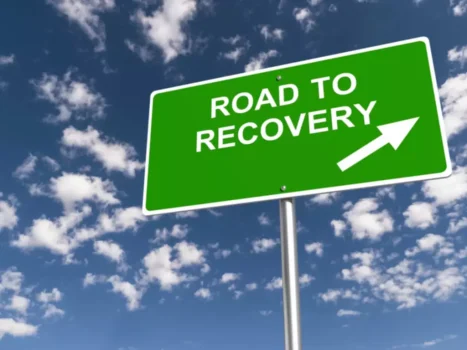
In RP client and therapist are equal partners and the client is encouraged to actively contribute solutions for the problem. Client is taught that overcoming the problem behaviour is not about will power rather it has to do with skills acquisition. Another technique is that the road to abstinence is broken down to smaller achievable targets so that client can easily master the task enhancing self-efficacy. Also, therapists can provide positive feedback of achievements that the client has been able to make in other facets of life6.

Treatment strategies in the relapse prevention

The empirical literature on relapse in addictions has grown substantially over the past decade. Because the volume and scope of this work precludes an exhaustive review, the following section summarizes a select body of findings reflective of the literature and relevant to RP theory. The studies reviewed focus primarily on alcohol and tobacco cessation, however, it should be noted that RP principles have been applied to an increasing range of addictive behaviors [10,11]. The dynamic model of relapse assumes that relapse can take the form of sudden and unexpected returns to the target behavior. This concurs not only with clinical observations, but also with contemporary learning models stipulating that recently modified behavior is inherently unstable and easily swayed by context [32]. While maintaining its footing in cognitive-behavioral theory, the revised model also draws from nonlinear dynamical systems theory (NDST) and catastrophe theory, both approaches for understanding the operation of complex systems [10,33].
Cognitive Dissonance
Additionally, individuals are most likely to achieve the outcomes that are consistent with their goals (i.e., moderation vs. abstinence), based on studies of both controlled drinking and drug use (Adamson, Heather, Morton, & Raistrick, 2010; Booth, Dale, & Ansari, 1984; Lozano et al., 2006; Schippers & Nelissen, 2006). This paper presents a narrative review of the literature and a call for increased research attention on the development of empirically supported nonabstinence treatments for SUD to engage and treat more people with SUD. We define nonabstinence treatments as those without an explicit goal of abstinence from psychoactive substance use, including treatment aimed at achieving moderation, reductions in use, and/or reductions in substance-related https://ecosoberhouse.com/ harms. We first provide an overview of the development of abstinence and nonabstinence approaches within the historical context of SUD treatment in the U.S., followed by an evaluation of literature underlying the theoretical and empirical rationale for nonabstinence treatment approaches. Lastly, we review existing models of nonabstinence psychosocial treatment for SUD among adults, with a special focus on interventions for drug use, to identify gaps in the literature and directions for future research. We identify a clear gap in research examining nonabstinence psychosocial treatment for drug use disorders and suggest that increased research attention on these interventions represents the logical next step for the field.
Politicization of School Boards
The current review highlights a notable gap in research empirically evaluating the effectiveness of nonabstinence approaches for DUD treatment. While multiple harm reduction-focused treatments for AUD have strong empirical support, there is very little research testing models of nonabstinence treatment for drug use. Despite compatibility with harm reduction in established SUD treatment models such as MI and RP, there is a dearth of evidence testing these as standalone treatments for helping patients achieve nonabstinence goals; this is especially true regarding DUD (vs. AUD). In sum, the current body of literature reflects multiple well-studied nonabstinence approaches for treating AUD and exceedingly little research testing nonabstinence treatments for drug use problems, representing a notable gap in the literature. Individuals with fewer years of addiction and lower severity SUDs generally have the highest likelihood of achieving moderate, low-consequence substance use after treatment (Öjehagen & Berglund, 1989; Witkiewitz, 2008). Notably, these individuals are also most likely to endorse nonabstinence goals (Berglund et al., 2019; Dunn & Strain, 2013; Lozano et al., 2006; Lozano et al., 2015; Mowbray et al., 2013).
Right to Culturally Appropriate Education
- In addition to issues with administrative discharge, abstinence-only treatment may contribute to high rates of individuals not completing SUD treatment.
- Overall, the Abstinence Violation Effect is a complex phenomenon influenced by a combination of cognitive, emotional, and biological factors.
- Marlatt, in particular, became well known for developing nonabstinence treatments, such as BASICS for college drinking (Marlatt et al., 1998) and Relapse Prevention (Marlatt & Gordon, 1985).
- On the other hand, if individuals perceive the Abstinence Violation Effect as a sign of personal failure or lack of self-control, it may diminish their self-efficacy and motivation to continue pursuing behavior change.
- Understanding the AVE is crucial for individuals in recovery and those focused on healthier lifestyle choices.
Overall, a large volume of research has yielded no consensus operational definition of the term [14,15]. For present purposes we define relapse as a setback that occurs during the behavior change process, such that progress toward the initiation or maintenance of a behavior change goal (e.g., abstinence from drug use) is interrupted by a reversion to the target behavior. We also take the perspective that relapse is best conceptualized as a dynamic, ongoing process rather than a discrete or terminal event (e.g., [1,8,10]).
- In the United States, education is primarily the responsibility of state and local governments, which provide most of the funding for and administrative oversight of K-12 public schools.
- Given this limitation, the National Institutes on Alcohol Abuse and Alcoholism (NIAAA) sponsored the Relapse Replication and Extension Project (RREP), a multi-site study aiming to test the reliability and validity of Marlatt’s original relapse taxonomy.
- In recent years, state leaders have retaliated against teachers and school administrators who challenged discriminatory censorship laws and policies and their implementation.
- The past 20 years has seen growing acceptance of harm reduction, evidenced in U.S. public health policy as well as SUD treatment research.
- Lapse management includes drawing a contract with the client to limit use, to contact the therapist as soon as possible, and to evaluate the situation for factors that triggered the lapse6.
Cognitive behavioural therapies are empirically supported interventions in the management of addictive behaviours. CBT comprises of heterogeneous treatment components that allow the therapist to use this approach across a variety of addictive behaviours, including behavioural addictions. Relapse prevention programmes addressing not just the the abstinence violation effect refers to addictive behaviour, but also factors that contribute to it, thereby decreasing the probability of relapse. Addictive behaviours are characterized by a high degree of co-morbidity and these may interfere with treatment response. Clayton Neighbors is a professor and Director of the Social Psychology Program at the University of Houston, USA.
Multiple theories of motivation for behavior change support the importance of self-selection of goals in SUD treatment (Sobell et al., 1992). For example, Bandura, who developed Social Cognitive Theory, posited that perceived choice is key to goal adherence, and that individuals may feel less motivation when goals are imposed by others (Bandura, 1986). Miller, whose seminal work on motivation and readiness for treatment led to multiple widely used measures of SUD treatment readiness and the development of Motivational Interviewing, also argued for the importance of goal choice in treatment (Miller, 1985). Drawing from Intrinsic Motivation Theory (Deci, 1975) and the controlled drinking literature, Miller (1985) argued that clients benefit most when offered choices, both for drinking goals and intervention approaches. A key point in Miller’s theory is that motivation for change is “action-specific”; he argues that no one is “unmotivated,” but that people are motivated to specific actions or goals (Miller, 2006). Despite the growth of the harm reduction movement globally, research and implementation of nonabstinence treatment in the U.S. has lagged.
In conclusion, the abstinence violation effect is a psychological effect that impacts those in recovery, as well as those who are focused on making more positive behavioral choices in their lives. By reframing lapses as learning opportunities and teachable moments, cultivating self-compassion, and seeking support, individuals can navigate these challenges more effectively, increasing their chances of leading a healthier lifestyle. AVE occurs when someone who is striving for abstinence from a particular behavior or substance experiences a setback, such as a lapse or relapse. Instead of viewing the incident as a temporary setback, the individual perceives it as evidence of personal failure, leading to increased feelings of guilt, shame, and hopelessness (Collins & Witkiewitz, 2013; Larimer, Palmer, & Marlatt, 1999).
Relapse Prevention
- Under international human rights law, freedom of expression may only be restricted if necessary and proportionate to further a legitimate purpose.
- It is, however, most commonly used to refer to a resumption of substance-use behavior after a period of abstinence from substances (Miller, 1996).
- It can impact someone who is trying to be abstinent from alcohol and drug use in addition to someone trying to make positive changes to their diet, exercise, and other aspects of their lives.
- Marlatt’s work inspired the development of multiple nonabstinence treatment models, including harm reduction psychotherapy (Blume, 2012; Denning, 2000; Tatarsky, 2002).
- Critical for craving and relapse is the process of associative learning, whereby environmental stimuli repeatedly paired with drug consumption acquire incentive-motivational value, evoking expectation of drug availability and memories of past drug euphoria15.
- Similarly, self-regulation ability, outcome expectancies, and the abstinence violation effect could all be experimentally manipulated, which could eventually lead to further refinements of RP strategies.
- Findings from these studies suggested that participants’ SE was lower on the day before a lapse, and that lower SE in the days following a lapse in turn predicted progression to relapse [43,45].
